20+ Sample Appraisal Evaluation
-
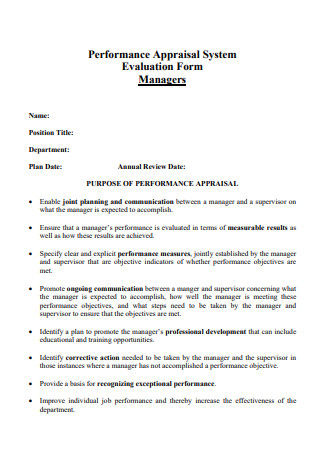
Appraisal Evaluation Form
download now -
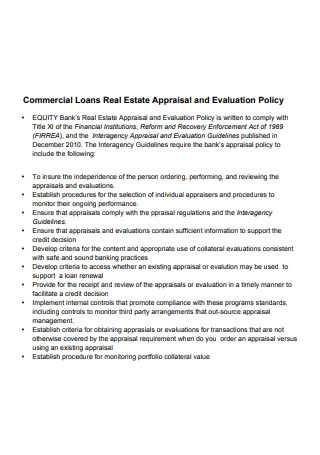
Real Estate Appraisal and Evaluation Policy
download now -
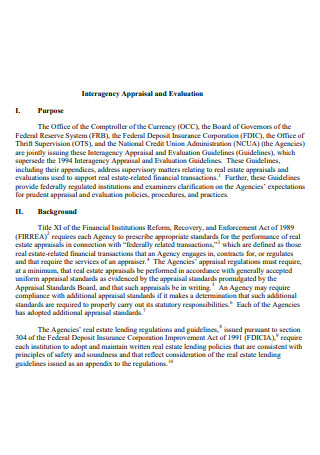
Appraisal Evaluation Template
download now -
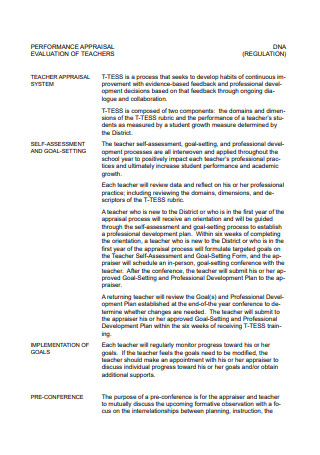
Teachers Performance Appraisal Evaluation
download now -

Performance Appraisal Interim Evaluation
download now -

Independent Appraisal Evaluation
download now -

Vocational Education and Training Policy Appraisal Evaluation
download now -
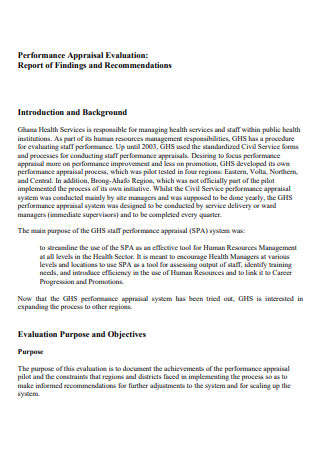
Performance Appraisal Evaluation
download now -
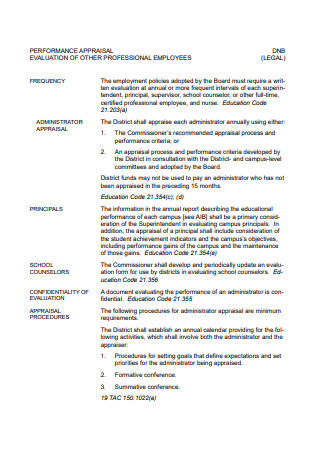
Professional Employees Performance Appraisal Evaluation
download now -
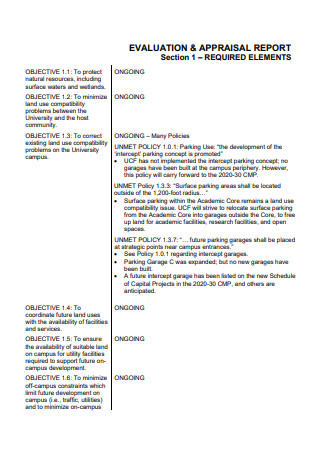
Appraisal Evaluation Report
download now -
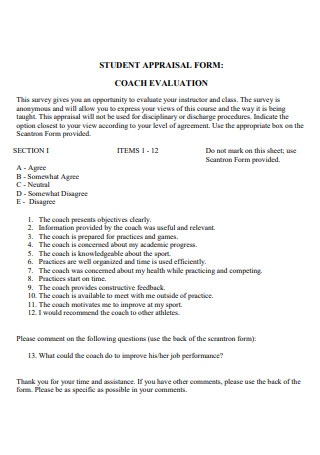
Student Appraisal Coach Evaluation
download now -
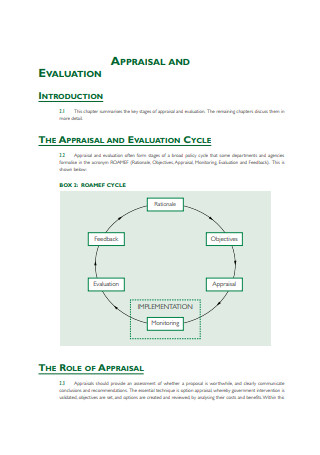
Appraisal Evaluation Example
download now -
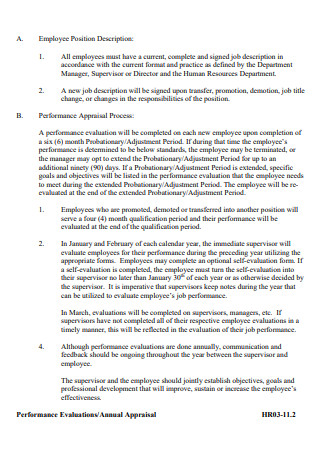
Annual Appraisal Performance Evaluation
download now -

Appraisal Security Evaluation
download now -
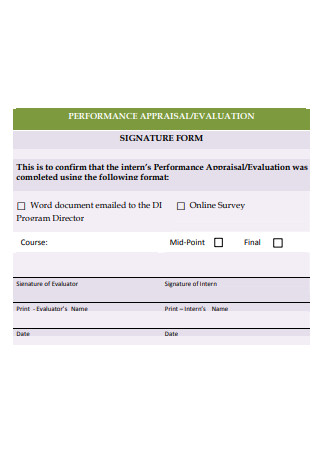
Performance Appraisal Evaluation Form
download now -
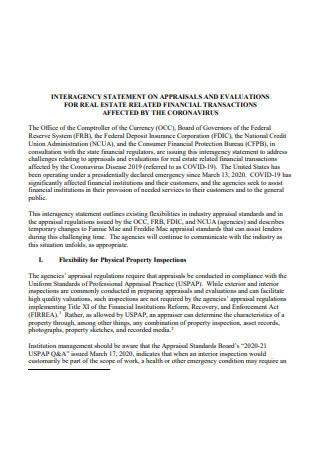
Appraisal Evaluation in PDF
download now -

Appraisal Matrix Performance Evaluation
download now -
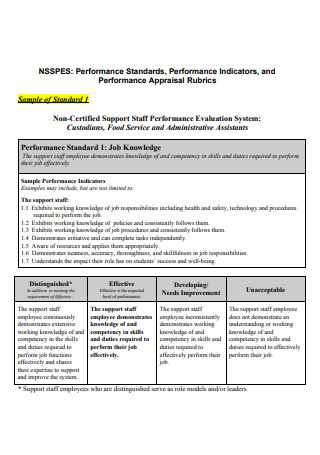
Staff Performance Appraisal Evaluation
download now -
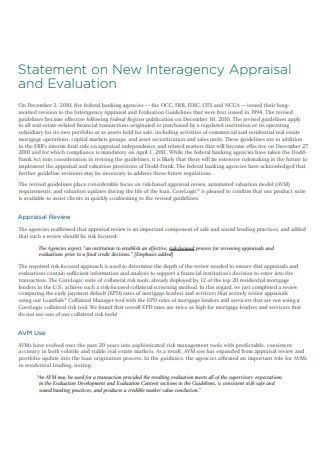
Basic Appraisal Evaluation
download now -
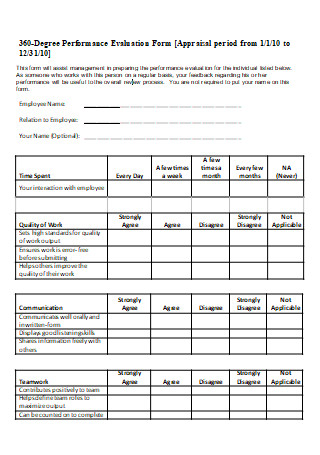
Printable Appraisal Evaluation
download now -

Performance Appraisal Evaluation in DOC
download now
FREE Appraisal Evaluation s to Download
20+ Sample Appraisal Evaluation
What Is an Appraisal Evaluation?
Benefits of an Appraisal Evaluation
Types of Evaluation
How To Create an Appraisal Evaluation System
FAQs
What are the purposes of performance evaluations?
When is it appropriate to do a performance evaluation?
What does it mean to have self-evaluation skills?
What Is an Appraisal Evaluation?
An appraisal evaluation is a periodic examination of an employee’s job performance and overall contribution to the organization. It is alternatively referred to as an annual review, performance review, evaluation, or employee appraisal, which assesses an employee’s abilities, accomplishments, and growth—or lack thereof. Companies use appraisal evaluations to provide general feedback on employees’ performance and justify pay increases and termination decisions. They can be conducted at any time but are most frequently performed on an annual, semi-annual, or quarterly basis. Since companies have a finite pool of funds from which to award raises and bonuses, this helps determine how those funds are allocated.
They enable businesses to decide which employees have made the most significant contribution to the company’s growth, allowing businesses to reward their top performers appropriately. Also, it assists employees and managers in developing a plan for employee development through additional training and increased responsibilities and identifying areas where the employee can improve. Managers and employees should communicate about an employee’s contributions throughout the year, not just during the appraisal evaluation. Increased communication helps keep everyone on the same page, fosters more robust relationships between employees and managers, and alleviates the stress associated with annual reviews. Annual performance reviews continue to be valued by certain HR specialists, according to statistics. However, according to a 2018 poll by the research firm World at Work, formal performance evaluations are still employed by 80% of organizations.
Benefits of an Appraisal Evaluation
Appraisals are essential for assessing and rewarding performance. They provide a means of evaluating your team across numerous performance measures and assisting in identifying high performers when properly applied. Employees can use performance appraisals to learn about their strengths and weaknesses, correct poor habits, and realize their maximum potential. On the other hand, managers can utilize this evaluation system to evaluate their employees against established goals and handle performance difficulties. The advantages of a performance appraisal are contingent on how it is carried out. It can be a valuable tool for hiring and promotion decisions if done correctly. Consider it a chance to evaluate the company’s training and development initiatives, acknowledge outstanding performers, and highlight areas for improvement.
Organizations can also utilize appraisals to keep track of shifting responsibilities, identify trouble areas, and discover new methods to capitalize on an employee’s abilities. Employees may not receive quality performance reports or feedback because managers do not always grade them on objective criteria. Because performance evaluations are held every four, six, or twelve months, they may not accurately reflect an employee’s current performance. For managers with large teams, this procedure is time-consuming and frustrating. Performance assessments can have several drawbacks, including poor communication, generic feedback, and human error. This method may also foster unhealthy workplace competition, resulting in increased turnover, conflicts, and disengagement. Following that, below are a few of its additional advantages:
Types of Evaluation
As a small business owner, you may examine that you already have strong communication with your employees and that formal reviews are unnecessary. On the other hand, evaluations provide evidence for promotions, disciplinary action, and termination when done correctly and consistently among personnel. For example, reviews can defend firms against claims of discrimination. However, they also assist individuals in finding job satisfaction, reducing the company’s employment costs. Employee reviews can be divided into three categories.
General Characteristics
Employers must decide which skills and characteristics they value, with the assistance of a human resources professional if necessary. The first section of the employee review can include questions about the employee’s work quantity and job requirements. For instance, a receptionist may be evaluated on her ability to take messages. The second section of the evaluation may include questions about an employee’s attitude, such as their willingness to assist others with their work. For this section, the receptionist’s performance may be evaluated based on her desire to assist other employees by helping with data entry. Employees typically complete a related self-assessment and then meet with their manager to discuss the results. The manager should conduct a two-way conversation during the review, inviting the employee to discuss the most important issues.
Traditional Evaluations
An employee’s manager conducts traditional or top-down evaluations to evaluate the individual, discuss plans, and give raises. The appraisal is held solely between the manager and the employee. Although an employee’s manager may be familiar with her job, the fundamental issue of traditional evaluations is that they are conducted by only one person, who may be biased or unaware of all employee performance elements.
360-Degree Evaluations
Employees who participate in 360-degree performance assessments receive input from various sources, including their supervisor, coworkers, subordinates, and even customers and vendors. People provide feedback using a computer or paper format to answer standardized questions on an employee’s competencies and performance results. It is possible to leave anonymous feedback. The employee is given a report that outlines his accomplishments and opportunities for development. This strategy is also utilized solely for the development of employees.
Peer Evaluations
Employees can provide feedback on their coworkers’ strengths and flaws, providing more insight into an employee’s performance than a manager could provide alone. Employees benefit from receiving information on specific issues from multiple sources, including individuals who work at the same level. Peers develop a sense of collaboration as well. The drawback is that if coworkers are competing for promotions or salary hikes, they may be more critical of one another. As a result, this procedure should be separated from advertisements and raises decisions, which should be left to a manager. Peer evaluation can be done anonymously or in groups. Staff training makes it easier for them to do fair evaluations.
How To Create an Appraisal Evaluation System
Appraisal evaluations, which enable employers to assess their employees’ contributions to the business, are critical for building a solid work team. However, the benefits of appraisal evaluations outweigh the drawbacks. Performance evaluations can establish acceptable performance boundaries, increase employee recognition, and facilitate effective communication. When used in conjunction with a performance evaluation system that includes a standard evaluation form, standard performance measures, guidelines for providing feedback, and disciplinary procedures, it can also motivate individuals to do their best for themselves and the practice. The primary goals of an appraisal evaluation system are to provide an equitable measurement of an employee’s contribution to the workforce, generate accurate appraisal documentation that protects both the employee and the employer, and produce work of a high level of quality and quantity. To construct an appraisal evaluation in your practice, follow these five steps:
Step 1 Create a form for evaluation.
Appraisal evaluations should be conducted honestly, consistently, and objectively to safeguard your employees’ interests and safeguard your practice against legal liability. Consistency can be achieved by using a standard evaluation form for each evaluation. The form you use should be limited to the critical areas of job performance. By focusing on a few fundamental areas, the assessment becomes more meaningful and relevant, allowing you and the employee to address the most critical issues. An evaluation does not have to cover every detail of an employee’s performance.
Step 2 Determine the performance indicators.
Standard performance metrics, which enable you to evaluate an employee’s job performance objectively, can help you save time and worry when filling out the evaluation form. Although one of the more time-consuming aspects of constructing a performance evaluation system is developing these metrics, it is also one of the most powerful. You’ve already taken the first step toward generating standard performance measures by having current job descriptions for each position in your business. Traditional performance measures are specified quantity and quality targets related to the duties listed in a job description. Common performance measurements, on the other hand, go a step further than the job description.
Step 3 Establish feedback guidelines.
Appraisal evaluations are all about providing feedback. So, when you put your performance review system in place, make sure that everyone involved in the process understands what kind of feedback to give, how to give it, and how to get it from the employee.
Step 4 Create procedures for disciplinary action and termination.
Even after an appraisal evaluation and discussion of expected improvements, an employee may continue to perform poorly in some instances. You must be prepared to deal with such an occurrence by implementing well-defined, written disciplinary and termination procedures. These procedures should spell out the steps taken if performance deteriorates – a verbal warning, a written warning if no improvement or recurrence occurs, and termination if the situation does not improve or recur.
Step 5 Make a schedule for your evaluations.
You only need to select when to conduct performance evaluations once you’ve developed your performance evaluation system, including the evaluation form, performance measures, feedback guidelines, and disciplinary procedures. Some businesses do all staff assessments at the same time each year, while others do it within 30 days of each employee’s first day on the job. Regardless of how you decide to arrange the evaluations, each appraiser sticks to the deadline. Employees will feel devalued if their assessments are not completed on time, affecting morale and performance.
FAQs
What are the purposes of performance evaluations?
Performance appraisals are used to judge an employee’s job performance over a specified time. These evaluations are used to identify both strengths and weaknesses to optimize future performance.
When is it appropriate to do a performance evaluation?
Management of performance is a continuous activity. Managers are urged to interact with staff throughout the year to set goals, track progress, and provide feedback. On a yearly or quarterly basis, formal reviews or assessments are common.
What does it mean to have self-evaluation skills?
Similarly, self-assessment is the ability to scrutinize oneself to determine how far one has progressed. It’s a talent that allows people to keep track of their work or skills, identify their strengths and limitations, and self-diagnose appropriate solutions.
A significant component of your practice structure should be an appraisal evaluation. It provides fairness and accountability, promotes career development, and fosters pride in your employees’ contributions to the practice when executed properly.
